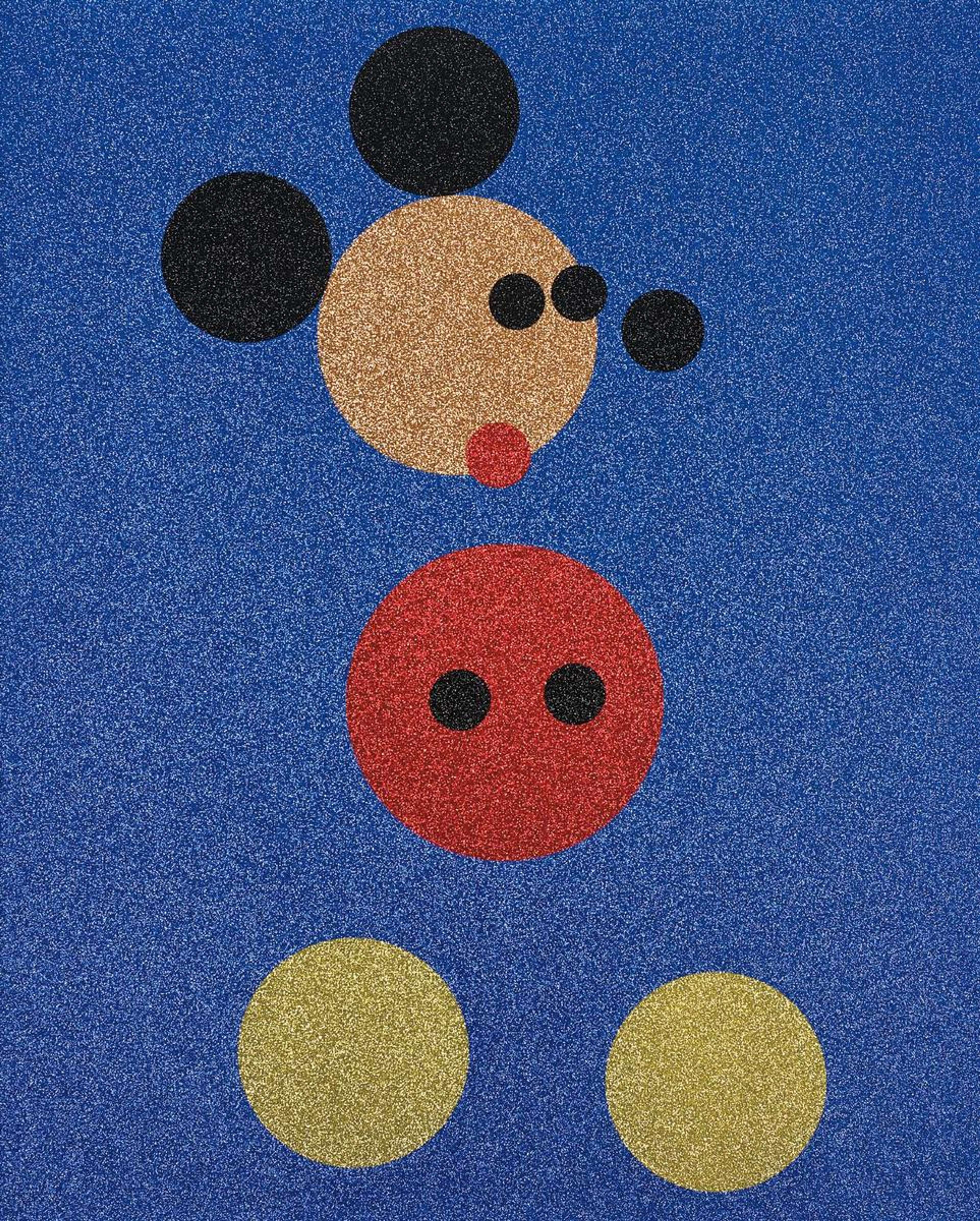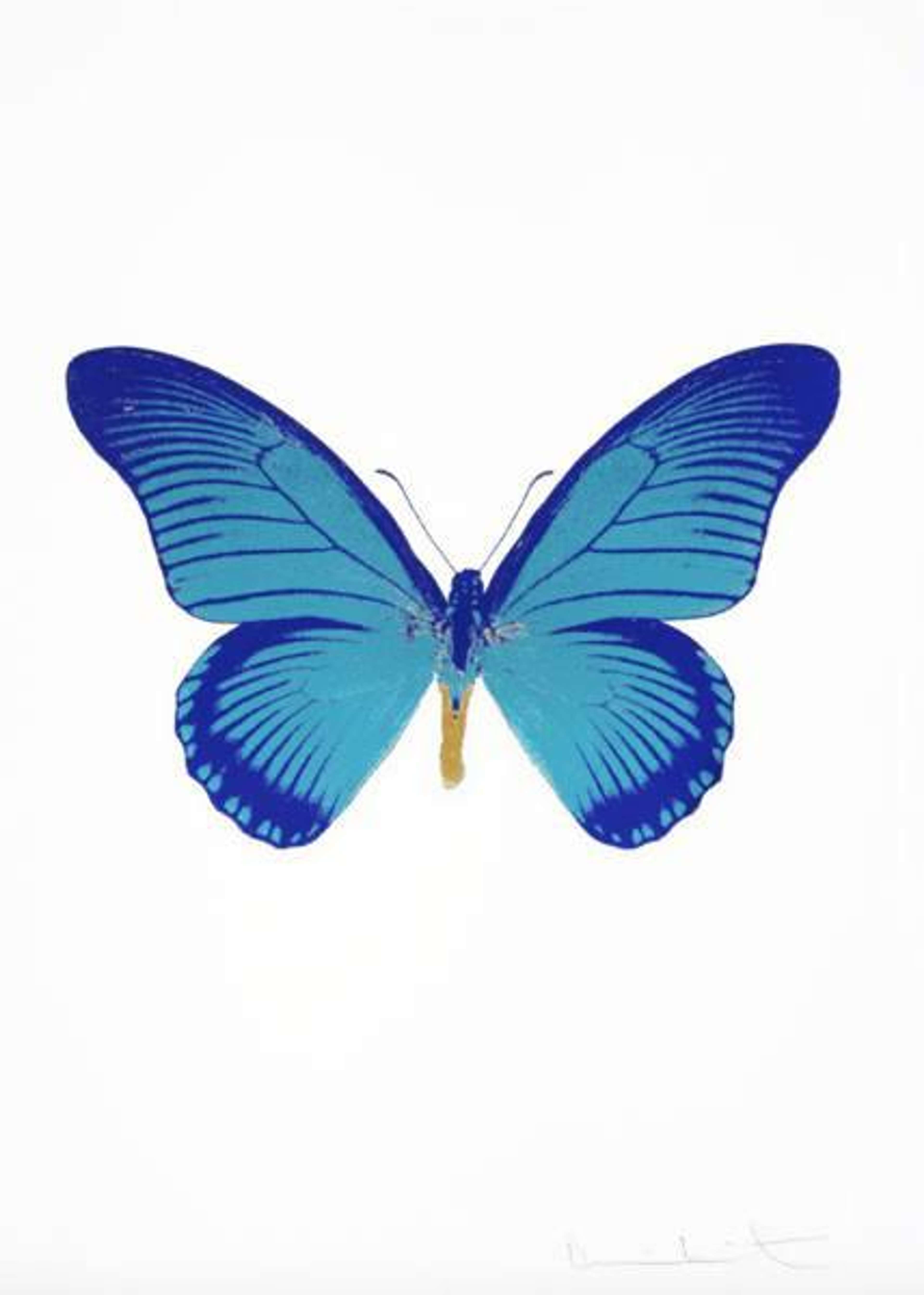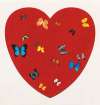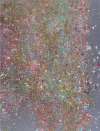 Valium © Damien Hirst 2000
Valium © Damien Hirst 2000Market Reports
Damien Hirst’s print market, ranging from his iconic spot works to time-drop demand-based releases, remains a cornerstone of the contemporary print market. While well-established, Hirst’s print market is not immune to fluctuations. This guide provides valuable insights into market trends, pricing strategies, and how to navigate the demand for Hirst’s works, helping you make informed decisions when selling a Hirst print.
Damien Hirst's Early Prints To Latest Releases
Hirst entered the print market in 1999 with the release of his first limited-edition series, The Last Supper, published by Paragon Press. He continued collaborating with Paragon until 2018 with other print collection. In 2005, Hirst established his own publishing company, Other Criteria, which produced limited editions and multiples for himself and other artists. More recently, he has partnered with galleries such as Paul Stolper Gallery and HENI Editions, embracing innovative approaches like time-released and demand-based drops.
Hirst’s early prints are defined by recognisable motifs including spots, skulls, pill cabinets, and butterflies. More recently, he has explored cherry blossom trees and serene landscapes of the sea and gardens. Both his early and newer works have become cornerstones of his market, each unmistakably embodying his distinct style. By blending traditional and innovative publishing methods, Hirst has effectively sustained his relevance and continued appeal in the evolving print market.
How Much Are Damien Hirst Prints Worth?
The Virtues
Hirst’s print market peaked in 2022, achieving a record annual turnover of $4.6 million. During that year, Hirst’s prints sold for prices ranging from £700 to £151,200 at auction. However, the majority of his prints were priced under £50,000, emphasising the accessible and affordable nature of his market. For sellers, this reflects a broad buyer base, though often at lower price points. At the top end, a complete set of The Virtues, created in collaboration with HENI Editions (2021), sold for £151,200 (including fees) at Phillips in 2022, setting the highest auction record for Hirst’s prints and editions. Sellers holding complete sets or individual prints from The Virtues should note that these works remain highly sought after, consistently surpassing modest estimates, demonstrated by Phillips Editions sale in June 2024. Even as fewer works from The Virtues series entered the market in 2023 and 2024, the average sales value has remained strong, demonstrating sustained demand.
Hirst's Complete Sets
Complete sets of Hirst’s works have consistently outperformed individual prints. In 2024, 16 complete sets were offered at auction, signalling continued interest in these collections. The Empresses series remains the most accessible, with hammer prices ranging from £7,500 to £15,000, often achieving higher results at leading auction houses due to broader client bases and strong marketing. The Virtues complete sets sold for £30,000 to £80,000, while the newly trending Love Poems collection broke consecutive records, reaching a hammer price high of £80,000.
How Market Trends Influence the Value of Damien Hirst Prints
The value of Hirst’s prints is shaped by factors such as edition size, colourway, and subject matter. For sellers, understanding the current market value is crucial, as fluctuations have occurred even in his most popular series. In 2023, Hirst’s Spots editions experienced strong demand setting new auction records, but by 2024, interest had shifted toward butterfly-themed works and the Love Poems series. These shifts, typical of artists' markets, underscore the importance of staying informed about trends to maximise value as a seller.
While auction results can provide a general estimate, consulting a specialist is the most reliable way to determine the value of a Hirst print. At MyArtBroker, we offer free, no-obligation valuations to help you navigate the market with confidence. Contact us today to learn more.
Is your Damien Hirst Print Signed Or Unsigned?
Hirst is known to have signed his limited edition prints, though the location of the signature can vary. It is most commonly found in the lower right corner or along the edge, but in some cases, it may be located on the reverse. For Hirst’s early printed edition collections, such as the Spots series, The Souls series, Love Poems, and For The Love of God skull prints, the signature is hand-signed directly onto the print. The material used for the signature - whether pencil or ink - depends on the type of paper used for the print. In contrast, Hirst’s HENI editions, including collections like The Empresses, The Virtues, Cathedrals, and others are signed and numbered on a label affixed to the reverse.
Typically, because Hirst signs the majority of his prints, the signature itself does not significantly influence market value. Instead, fluctuations in value are more closely tied to shifting market tastes, with certain motifs, like butterflies, spots, skulls, or pill cabinets trending at different times. However, sellers should be aware that a damaged or faded signature can directly reduce a print’s value. Similarly, for HENI editions, if the signature label on the reverse is damaged or detached, this can negatively affect the value when it comes time to sell and most market places won't accept it.
Sellers should also be cautious when dealing with posters on the secondary market. While Hirst posters can hold some value, they are typically stamped-signed with a facsimile of Hirst’s signature (if at all) and carry considerably less value compared to his limited edition prints. Trusted platforms like MyArtBroker offer expert valuations, helping sellers verify a signature’s authenticity and determine the fair market value (FMV) of Hirst’s works.
How to prove the authenticity of a Damien Hirst artwork
When preparing to sell your Hirst print, verifying its authenticity is a crucial step. Begin by confirming the provenance of your piece. Many of Hirst’s early works, such as Spots, Lessons in Love, Love Poems, The Souls on Jacob’s Ladder, and 12 Woodcut Spots (amoung others) were published by Paragon Press. Others, including pieces from the Psalms and Utopia collections, were produced by Other Criteria. Unlike some artists, Hirst’s prints rarely feature an embossed publisher’s logo, making it essential to conduct thorough research and consult an expert to accurately identify the publisher of the print you intend to sell.
Certain prints will come with a certificate of authenticity. HENI Editions, for example, will always have a label affixed to the reverse. Additinally, some Hirst prints have also been authenticated by the now-defunct Hirst Authentication Committee (HIAC).
Maintaining a proof of purchase record is also crucial. Lastly, ensure the signature and edition number are verified. High-quality images of the signature are often required for remote transactions, and the edition number, found either on the front or reverse of the print, must match the specific edition. Authenticity controversies, such as the 2016 case of counterfeit Hirst works bearing fake signatures and studio stamps, underscore the importance of these steps. Prints sourced from reputable galleries, dealers, or auction houses typically come with prior authentication, offering added reassurance.
Ensuring the authenticity, provenance, and condition of your print is crucial for a successful sale. If you’re unsure, consult a specialist - The Directory offers a comprehensive list to address all your print-related needs. Contact us today to learn more.
Has Your Damien Hirst Print Been Kept In Good Condition?
After provenance, the condition of a Hirst print is one of the most critical factors prospective buyers will evaluate. Over time, prints can show signs of wear and tear - paper may warp, colours can fade from sun exposure, tape might leave marks, and sheets can develop stains or discolouration.
If a print is not in pristine condition, a professional conservator can help restore it by flattening the paper or addressing visible damage. However, prevention is always preferable. To protect your prints, mount them on acid-free paper, frame them with UV-protective glass, maintain a stable temperature, and minimise humidity. For unframed prints, handle them with gloves and store them in a safe environment, away from damaging factors like light and water.
Learn more about preserving Modern and Contemporary prints in our comprehensive Restoration Guide and submit your Damien Hirst print for a free valuation today.
When is the best time to sell a Damien Hirst print?
Strategic timing plays a crucial role when deciding to sell a Hirst print. Interest in Hirst’s editions has remained consistently strong, supported by his established market presence, collaborations with leading publishers like HENI, and representation by prominent galleries. Hirst has also had a series of blockbuster exhibitions, such as Natural History at Gagosian in March 2022, which have further solidified his status as a blue chip artist, all factors which tend to work in the seller's favour.
However, sellers should carefully monitor Hirst’s use of demand-driven, time-released editions. While these drops can sometimes drive value increases, the high production numbers and frequency of releases can also pose saturation risks, potentially affecting resale values on the secondary market. Sellers may benefit from exploring alternative sales avenues to mitigate these risks. Despite these challenges, Hirst’s prints remain highly accessible and appealing to both entry-level collectors and seasoned buyers looking to diversify their portfolios with works from a globally recognised and influential artist, making them lucrative assets.
Ways to Sell with MyArtBroker
At MyArtBroker, our specialists provide a free market valuation for your artwork, offering a level of transparency unmatched in today’s market. In addition to our valuations, through our online Trading Floor, you can access real-time insights into works by the artist you’re looking to sell, including pieces that are most in demand, wanted, or currently for sale: allowing sellers to trust the valuation that they are provided.
Additionally, the MyPortfolio collection management service grants you free access to our comprehensive print market database. This resource allows you to review auction histories for the specific work you’re looking to sell, including hammer prices, values paid, and seller returns. In a fluctuating market, this historical data is invaluable - and often comes at a cost elsewhere - offering insights into past and current values to further inform decisions based on market timing and conditions. In addition to our specialists guidance, you have concrete data.
Our approach is tailored to align with the unique attributes of each artwork, and offer optimal results:
How a Private Sale Works
Unlike peer-to-peer platforms, which lack specialised expertise, authenticity guarantees, and legal infrastructure for high-value sales, MyArtBroker operates through private sales ensuring a secure and seamless transaction process. We charge sellers 0% to sell, and take a small commission from our buyers, absorbing essential aspects including insurance, shipping, and marketing - at no extra cost to the seller. There is no magic to it, we’re a lean specialised business with less overheads than traditional models meaning we can do better for our clients.
Our revenue is derived from buyer commissions only, which are individually negotiated upon offer, and we aim to give the client the best return in the market place. By focusing on high-value artworks in excess of £10,000, we provide specialised care and expertise, ensuring each piece receives the attention it deserves, while simultaneously maximising returns with our clients. For works that fall below this threshold speak to the team about a recommendation, we offer market advisory free of charge. Our goal at MyArtBroker is to offer a seamless solution, setting us apart in the art market.
Advisory and Recommendations
In cases for artists and artworks, where our existing network of collectors isn’t the best fit due to value, medium or condition we collaborate with reputable partners to facilitate its sale. Carefully tailoring your artwork to the right party. This tailored approach is especially important as it considers the unique attributes of each artwork, providing sellers with the best possible outcome in today’s shifting art market. You can discuss this approach with us without charge as part of our advisory service.
Such recommendations are on a case-by-case basis, and ensures broader exposure and takes advantage of our knowledge of where a work will do best.
Why sell your Hirst with MyArtBroker?
A Dedicated Broker
Just as private dealers bring extensive auction expertise and a personalised approach, MyArtBroker offers a similar experience tailored to Contemporary print transactions. When you work with MyArtBroker, you are paired with a dedicated expert broker who will guide you through the entire selling process and connect you with verified buyers - all at no cost to you. We charge 0% commission fees and cover overhead expenses, including shipping, marketing, and storage. Additionally we assist with authenticity and condition checks maintaining a verified network of experts in the field.
MyArtBroker combines the convenience of online transactions through our live Trading Floor with the trusted methods of working directly with experienced art market professionals. Our platform provides immediate access to live valuation tools, powered by our proprietary algorithum, helping you understand the value of your print and current market trends.
Our brokers are committed to negotiating the best price for your print, ensuring a smooth, hassle-free process. Selling with us is completely free, and you benefit from immediate payment from collectors without the risk of settling for a lower-than-expected price. Unlike auction houses, which may delay consignments due to overlapping sales or long wait times for upcoming auctions, MyArtBroker offers a faster and more flexible way to sell your artwork.
Our Network
With a global network of over 30,000 collectors actively buying and selling daily and over 75,000 monthly visitors to our website, MyArtBroker connects you with a verified buyer at the right price. Our extensive network of private collectors, brokers, and galleries ensures a tailored and effective sales process.
Our online Trading Floor and our dedicated sales specialists market your work making sure that it reaches interested buyers eliminating the stress of navigating the uncertainties and strict time schedules of auction calendars. Through our online marketplace, we empower collectors with real-time market data and insights, redefining art investment and trading in the digital era. Our approach combines convenience, accessibility, and unparalleled transparency, ensuring value for tens of thousands of users worldwide.
If you’re considering selling a Hirst print, contact us today. Our team will guide you through the process and help you achieve the best possible outcome.




















